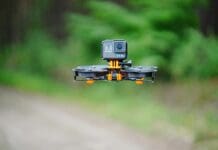This post is also available in:
 עברית (Hebrew)
עברית (Hebrew)
At the CES 2025 Global Media Meetup held on December 13 in Seoul, GenGen AI, a rising startup specializing in artificial intelligence, unveiled its groundbreaking approach to synthetic data generation. This innovation is set to transform the defense and mobility sectors, where data accuracy and security are critical.
According to Interesting Engineering, CEO Cho Ho-jin highlighted the potential of synthetic data—artificially generated information that simulates real-world scenarios. While autonomous driving has pioneered the use of synthetic data, the defense sector is just beginning to tap into its vast potential. According to Cho, autonomous driving relies heavily on real-world data gathered by cameras, but challenges such as varying regulations and unpredictable accident scenarios can complicate the process. GenGen AI addresses these hurdles by creating highly accurate synthetic imagery tailored to specific conditions like weather, road signs, and animal data, helping to improve AI training systems for vehicles.
GenGen AI employs three key technologies to generate synthetic data: using text prompts to create new images, transforming real-world data by altering variables like time camera type or weather, and synthesizing objects or targets that are hard to capture in real life. With the ability to generate high-quality data within weeks—compared to the months it typically takes through traditional methods—the company offers a faster, more flexible solution for data collection.
Expanding into the defense sector, GenGen AI is now generating infrared images for diverse military targets, including anti-aircraft and anti-ship imagery, as well as visuals of explosions and smoke for realistic simulations. The company is also focusing on wartime scenarios, including military vehicles and camouflage imagery.
The company will showcase its innovations at CES 2025 in Las Vegas next month. As GenGen AI continues to refine its technology, it promises to significantly impact AI deployment across both the defense and mobility industries.

























